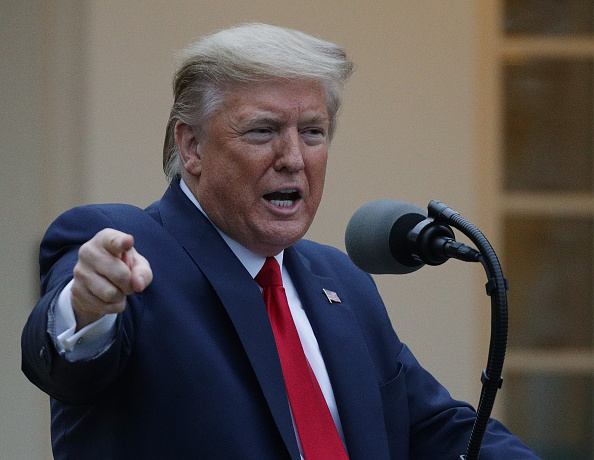Before the November elections, National Review editor Rich Lowry made a prediction: If Donald Trump loses, it will be because he failed to propose a health plan.
As an example of what Trump should be doing, Lowry pointed to an article I wrote with Heritage Foundation scholar Marie Fishpaw discussing key health reforms. After the election, the editors of the Wall Street Journal echoed Lowry. They also pointed to our article and said it was the roadmap for Republicans going forward.
Here is what everyone was missing: Marie Fishpaw and I were not writing about what we should do. We were mainly writing about what had already been done. These were remarkable changes—radical deregulation of the entire health care industry, in fact—that Trump acted on but never talked about. And, sorry to say, on the way out the door the Trump administration was still not saying very much.
Trump’s most important domestic policy accomplishments were in the area of deregulation. And no industry was more impactfully deregulated than health care. Trump got a lot of things right.
21st Century Communication
Seniors can now talk to their doctors by phone. And not just phone—they can also communicate through email, Zoom, Skype, Facebook, and other outlets.
Believe it or not, as we entered 2020 it was illegal (by an act of Congress!) for doctors to bill Medicare for telemedicine consultations, except in rare circumstances. The Trump administration had been pushing the envelope, allowing virtual check-ins and demonstration projects in the Medicare Advantage plans, among other tenets of telemedicine.
Then, when Congress gave its temporary approval in the face of the COVID-19 crisis, the administration pounced. By April, one in five seniors in rural areas and almost one in three in urban areas had participated in at least one telehealth visit. And this is the least computer-literate segment of the population!
What made such a rapid change possible? Several years of preparation. The Centers for Medicare and Medicaid (CMS) had to decide what procedures would qualify for a virtual visit and which ones would not (they finally approved 145 different procedures). They also had to decide what fee should be charged: whether a virtual consultation would be paid at the same rate as an in-office visit and whether an audio-only consultation would be paid the same as an audio-visual one. These decisions took months. And they are the reason why the administration was ready when Covid-19 hit.
Had Hillary Clinton been president, she probably would have been moved to permit telemedicine the same way Congress was moved. But telehealth consultations would not have started in February 2020—they might not have started until November or December 2020.
Doctors on Call
Being able to talk to a doctor on nights and weekends rather than making a trip to a hospital emergency room used to be a privilege only enjoyed by the rich—“concierge care.” Now, anyone who wishes to can have 24/7 access to primary care.
The service is called “direct primary care” (DPC), and just about anyone who can afford to buy health insurance can afford DPC. Atlas MD in Wichita, for example, charges $50 a month for a younger adult and $10 a month for a child. In addition to 24/7 primary care, patients have access to generic drugs for prices lower than what Medicaid pays and access to inexpensive lab tests as well.
However, before last year, employers were not allowed to put money into an account for employees to use to contract with a DPC provider of their choice. That’s unfortunate because DPC at nights and on weekends is not only cheaper than the emergency room, it is much safer than having to enter a hospital.
The Trump administration asked the IRS to approve the use of employee accounts for DPC contracting, and an announcement from the IRS is still pending. Currently, it appears that Health Savings Accounts cannot be used for that purpose, but a similar account, called a Health Reimbursement Arrangement, probably can be.
Insurance on the Go
Employees can have personal and portable health insurance. Before 2019, it was illegal for employers to purchase insurance that employees owned and could take with them from job to job and in and out of the labor market.
In fact, under Obama administration rules, employers caught doing that faced the highest fine in all of Obamacare. Beginning January 1 of last year, however, employers can now fund individually owned health insurance for their employees, and the Trump administration encouraged them to do so.
Missed Opportunity
Trump not only failed to campaign on these and other important health reforms, he also missed the opportunity to make the case for finishing the job.
All of these accomplishments are temporary. In some cases, they are emergency measures tied to COVID and may not last beyond the pandemic. For example, when the virus goes away, the ability of seniors to talk to their doctor by phone will also go away. In other cases, the reforms were the result of executive orders that can be reversed by president Biden or some future president.
What the Trump administration did for health care is one of the best-kept secrets in America. Donald Trump himself is the reason for that.
John C. Goodman is co-publisher of Health Care News. This article appeared on January 26, 2021, on the Independent Institute blog. Reprinted with permission.




















